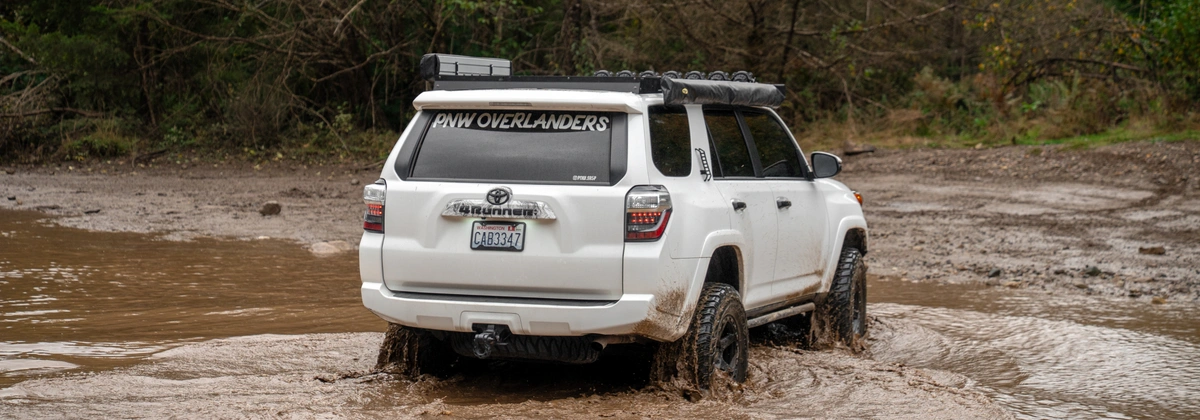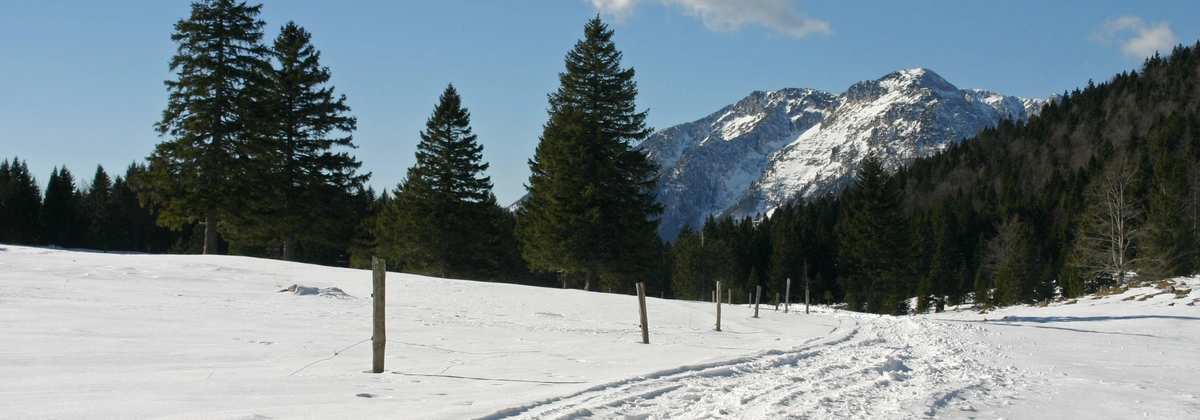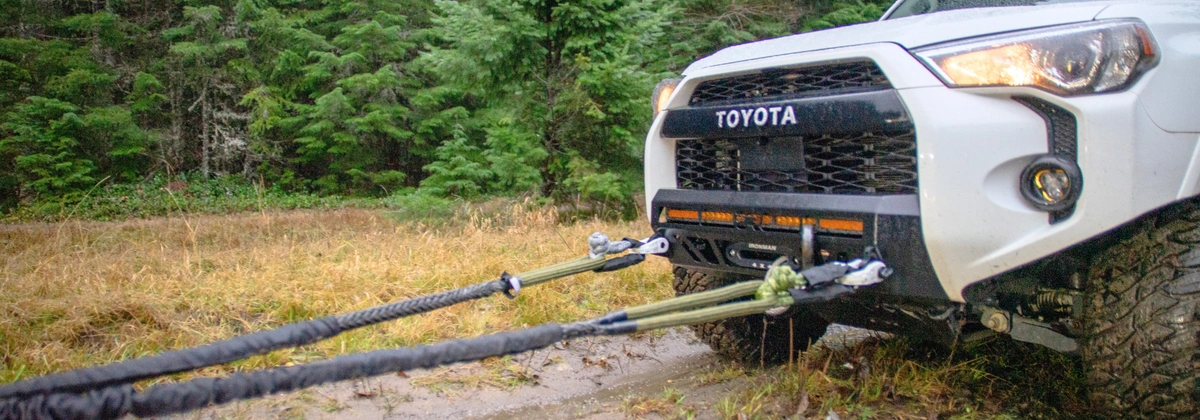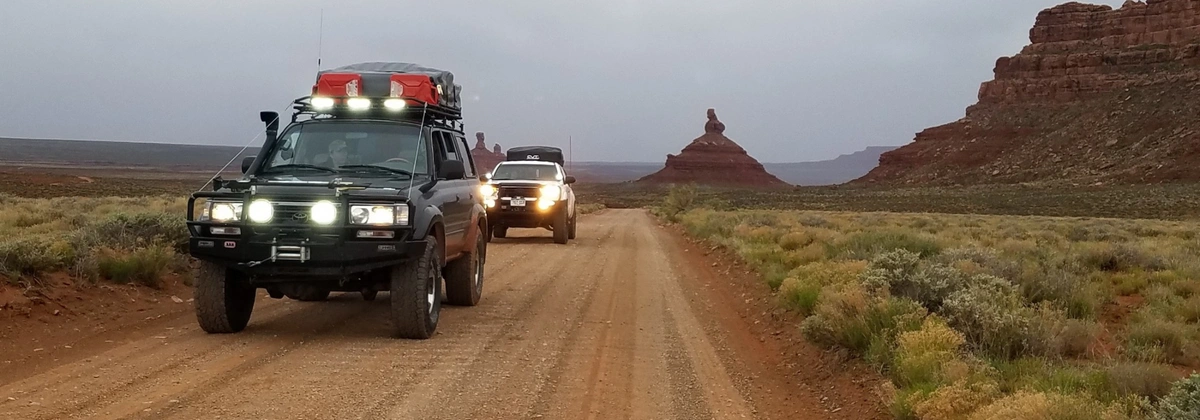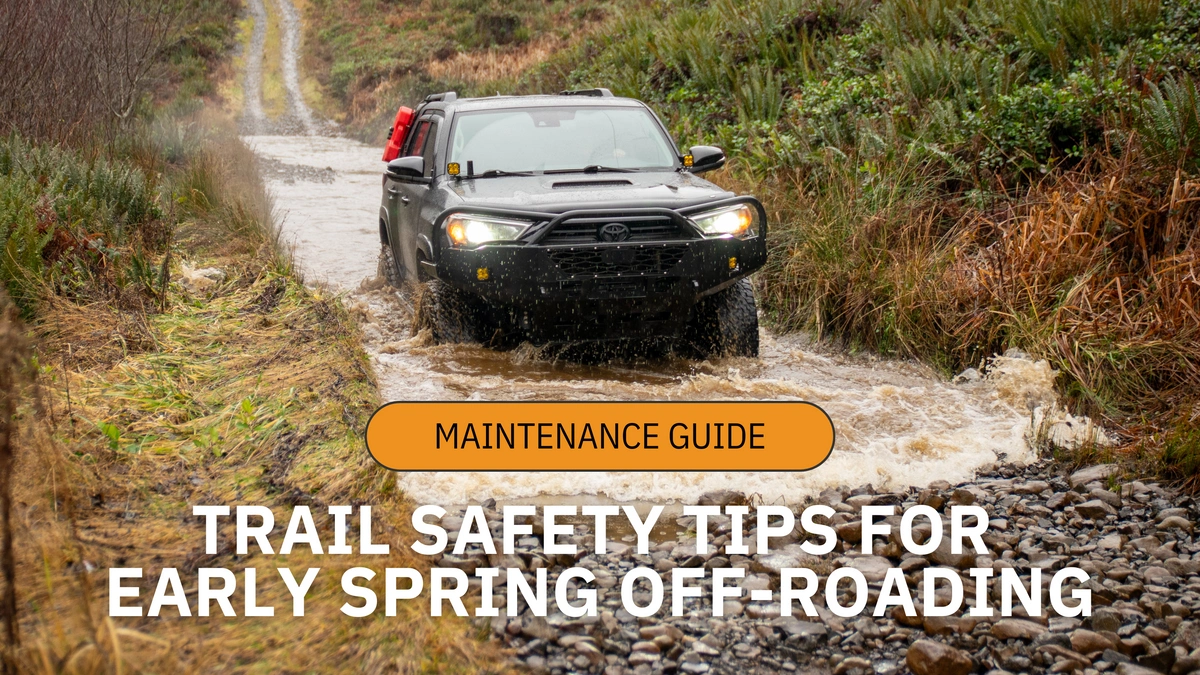
Trail Safety Tips for Early Spring Off-Roading: How to Handle Unpredictable Conditions
Early spring is one of the most unpredictable times for off-roading. The changing seasons create a mix of trail conditions—mud, snow, slush, and in some spots, even dry terrain—all in a single trip. For those eager to get back on the trails after winter, preparation is key. Knowing how to handle shifting conditions can make or break your adventure. Here’s how to navigate early spring trails safely while making the most of the season’s unique challenges.
Spring Trail Conditions: Expect the Unexpected
Heading out on the trails this time of the year can be full of surprises, with trail conditions changing drastically depending on elevation, recent weather, and terrain. In higher elevations, snow and ice can still be lurking around, especially in shaded areas or along north-facing areas. It’s easy to assume a trail is clear, only to find deep snowdrifts—piles of windblown snow that can be much deeper and softer than they look—or hidden icy patches. As temperatures rise and fall, slush forms, making traction unpredictable. Slush is particularly tricky because it’s thick enough to bog down your tires but slick enough to make steering feel unstable, almost like trying to drive through mud and ice at the same time.
And on that note, you’ll most likely run into mud and larger water crossings along the trail as well. Melting snow and seasonal rain create deep puddles and mud pits that may be much deeper than they appear. A trail that seemed solid just days ago can quickly turn into a slick, rutted mess, especially when the freeze-thaw cycle comes into play. As temperatures swing between freezing at night and warming during the day, water in the soil expands and contracts, weakening the ground. This makes the dirt loose and unstable, turning firm trails into deep mud by the afternoon. In some cases, it can even cause sections of the trail to wash away or collapse. If you’re camping at higher elevations, be mindful that the ground conditions can change overnight.
Meanwhile, trails at lower elevations might already be dry and dusty, offering a completely different driving experience just a few miles apart.
With such extreme shifts in conditions, it’s crucial to be prepared for anything. A dry trail at the start of your trip can turn to slush as you climb. Mud pits might force you to reroute, adding unexpected time and distance. Snowdrifts and ice can make an otherwise easy trail impassable, while water crossings may be too deep to cross safely. Flexibility is key—having backup routes, the right gear, and knowing when to turn around can make all the difference. Spring wheeling is all about reading the conditions and adapting as you go.
Now let’s talk about how you can safely get through any trail this time of the year.
Pre-Trip Planning: Know Before You Go
Before you hit the trail, checking trail reports should be your first step. Forums and social media groups are great places to start to find real-time updates from fellow off-roaders.This is crucial to start with because it will help you gauge whether a trail is safe and what kind of gear you might need.
Weather forecasts are just as important. Spring temperatures can swing dramatically throughout the day, turning a firm, frozen trail in the morning into deep mud by the afternoon. Checking both the daily and weekly forecast will help you stay ahead of changing conditions.
Want a tool that gives you both trail status and weather updates in one place? Trails Offroad™ makes it easy with detailed trail guides that include up-to-date trail conditions. These statuses are either reported by recent visitors or updated based on information from local land management agencies. Plus, you can read firsthand reviews from others who have run the trail, giving you valuable insight into what to expect. To top it off, each guide includes a 7-day weather forecast with daytime and nighttime temperatures, so you can plan your trip with confidence.
Essential Gear for Spring Wheeling
Spring wheeling means packing for multiple conditions to avoid getting caught unprepared. Snow gear, traction boards, and recovery tools should always be part of your setup, no matter how confident you are in your vehicle’s capabilities. Some key gear to have on hand includes:
- Traction Aids: Recovery boards, snow chains, and a shovel for digging out tires.
- Recovery Gear: A quality tow strap, soft shackles, a winch (if equipped), and a tree saver strap for safe recovery in muddy or snowy conditions.
- Tools: Build out a reliable tool kit for your rig, all the necessities you may need to make any sort of repair on the trail.
- Tire Essentials: An air compressor, tire deflators to adjust pressure for changing terrain, and a tire repair kit.
- Navigation & Communication: A GPS device or offline maps, a reliable radio (like a GMRS or ham radio), and a backup power source for electronics.
- Clothing & Personal Gear: Waterproof boots, insulated layers, gloves, extra socks, and a rain jacket.
- Emergency Supplies: A first-aid kit, extra food and water, a fire starter, and an emergency blanket in case you get stuck overnight.
It’s always better to have gear you don’t end up needing than to find yourself in a tough spot without the essentials. Planning ahead, packing wisely, and staying flexible will help you handle whatever spring trails throw your way.
How to Handle Different Spring Trail Conditions
Off-roading in Snow and Slush
Driving through snow and slush requires a balance of momentum and control. 4Hi is generally the best setting for most snowy conditions, as it provides enough traction while maintaining a manageable speed. Lockers can help when navigating deep snow, icy patches, or when one wheel loses grip, as they force power to both wheels equally for better traction. However, in very slippery conditions, such as ice, be cautious with lockers—once traction is regained, the vehicle can steer unpredictably due to the sudden grip. Remember, using 2WD can sometimes work for light, packed snow if you have good momentum, but 4WD is usually the safer choice.
Don’t forget to air down! Airing down your tires in snow will increase their surface area, giving you more traction on top of snow or ice. A lower tire pressure helps prevent sinking into soft snow, making it easier to keep moving–just make sure you don’t go too low without beadlocks.
Off-roading in Mud
Mud can be one of the trickiest conditions to navigate, especially in early spring when the ground is saturated. For deep, thick mud, 4Lo is generally your best option, as it provides maximum torque to all four wheels, helping you maintain traction in slippery conditions. 4Lo is ideal for navigating through thick, deep mud or climbing a steep, muddy hill, as it allows for more control at slow speeds. When using 4Lo, drive at a steady, slow pace to prevent getting stuck and maintain control.
In some cases, however, you may find that 4Hi is more effective. If the mud isn’t too deep, using 4Hi can help you maintain some wheel speed, which can assist in cleaning out the tires as you move through the mud. This is particularly useful for less deep mud or when you need to keep a bit of momentum to avoid bogging down. If the mud is shallow or you need to keep speed to push through, 4Hi might be the better choice.
Lockers are very helpful when you’re stuck or when one wheel is spinning with no traction while the other has grip. They ensure both wheels on an axle turn at the same speed, providing better traction in deep mud. However, be cautious when turning with lockers engaged, as they can make steering more difficult.
Airing down your tires is crucial in muddy conditions. Lower tire pressure increases the tire’s surface area, helping you "float" on top of the mud rather than sinking into it. This improves traction and reduces the chances of getting stuck.
Off-roading through Water and Creek Crossings
Spring runoff can lead to unpredictable water levels, so always assess water depth before crossing. For most crossings, 4Hi provides the necessary traction. Avoid 4Lo unless the terrain is rough or steep, where you need more control and slower speed to cross safely. Lockers are generally not recommended for water crossings since they can cause steering difficulties in slippery conditions.
If you're crossing a creek with a significant amount of mud, 4Lo can help maintain control in the soft, sticky mud that can often accompany water crossings. Remember, if water reaches your intake, stop and reassess the situation to avoid hydro-locking your engine.
Airing down your tires is a good strategy for water crossings, especially when crossing through soft, muddy areas. Lower pressure helps your tires grip onto the riverbed or creek floor, providing better stability and traction.
Off-roading on Dry, Rocky, or Loose Terrain
At lower elevations, dry trails are often packed and firm, so 2WD is often enough for maintaining speed and fuel efficiency. However, on rocky or loose terrain, 4Hi is your best bet to maintain control while navigating uneven ground.
If you find yourself struggling to climb over larger rocks or navigating very loose gravel, switching to 4Lo provides more control and torque for crawling over obstacles. Lockers are helpful in rocky terrain, especially when you encounter large rocks or need to crawl slowly and steadily. However, use caution, as lockers can make turning difficult, especially on loose rocks.
Airing down your tires in loose terrain helps improve traction by increasing the surface area of the tire. Lower tire pressure also provides better flexibility, helping your tires conform to rocky or uneven surfaces for a smoother ride and more grip.
Trail Etiquette and Safety Tips
Traveling with a buddy is highly recommended in early spring. Unpredictable conditions mean an increased risk of getting stuck, and having another vehicle with you can make recovery much easier. Solo off-roading in these conditions is risky unless you have extensive experience and emergency communication equipment.
Minimizing trail damage is essential, especially when trails are soft from spring thaw. Stay on designated paths and avoid widening trails by driving around obstacles. Creating new routes contributes to erosion and damages the natural environment. When encountering others on narrow trails, knowing proper right-of-way etiquette keeps traffic moving safely. Typically, uphill traffic has the right of way, but communication is key when navigating tight spots.
Leave no trace principles should always be followed. Pack out all trash, respect seasonal closures, and wash your rig after your trip to prevent spreading invasive species. Many areas have specific springtime restrictions to protect wildlife and sensitive habitats, so always follow posted guidelines.
---------
Spring off-roading is an exciting transition from winter’s challenges to summer’s open trails, but preparation is key to making the most of the season. Checking trail conditions, bringing the right gear, and knowing how to handle different terrains can ensure a safe and enjoyable adventure. By planning ahead and respecting the trails, you’ll set yourself up for a successful off-road trip that lets you embrace the unpredictability of early spring.
For real-time trail reports and detailed trip planning resources, explore Trails Offroad™ to stay ahead of changing conditions and make informed decisions before hitting the trails.
